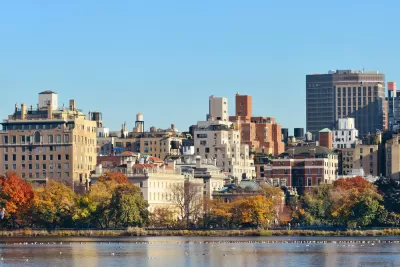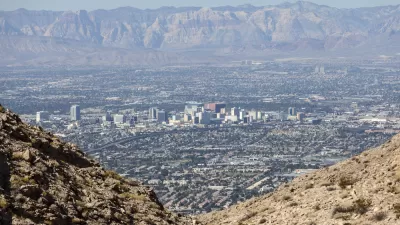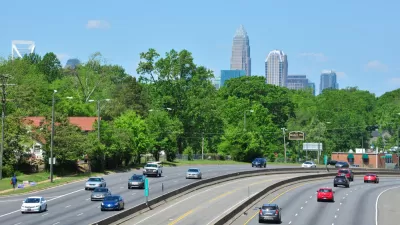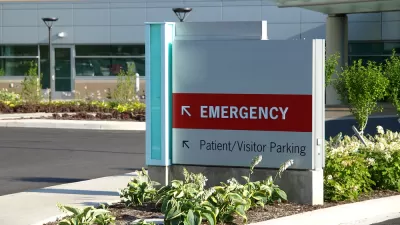The U.S. has lower average life expectancy than most peer countries. New research indicates that this results in part from sprawl. Life expectancy, economic mobility, mobility options, personal health and safety all improve in less sprawling areas.

A recently published study by University of Texas researchers, “Associations between Urban Sprawl and Life Expectancy in the United States” shows a correlation between urban sprawl and a decreased life expectancy in the United States.
The study identified significant direct and indirect associations between urban sprawl and life expectancy. After controlling for sociodemographic characteristics, it found that life expectancy was significantly higher in compact U.S. counties than in sprawling counties. Compactness affects mortality directly, but the causal mechanism is unclear. For example, it may be that sprawling areas have higher traffic speeds and longer emergency response times, lower quality and less accessible health care facilities, or less availability of healthy foods. Compactness affects mortality indirectly through vehicle miles traveled, which is a contributor to traffic fatalities, and through body mass index, which is a contributor to many chronic diseases. These findings support further research and practice aimed at identifying and implementing changes to urban planning designed to support health and healthy behaviors.
"What the study shows is that the United States is not among the countries with the highest levels of life expectancies despite the highest levels of expenditures on health care," said lead researcher Professor Shima Hamidi. "Changes in urban planning and the way we build things have to be made to help with this challenge."
This is part of a larger study which used 21 criteria in evaluating quality-of-life issues among residents who live in major metropolitan statistical areas. The results indicate that life expectancy, economic mobility, transportation choices and personal health and safety all improve in less sprawling areas.
"What the study shows is that alternatives like the green building movement have to become society's staple and not the exception," Hamidi said. "People who live in poorer socioeconomic areas often have to overcome more adversities like greater travel times just to get to work, school or the grocery store."
Hamidi also co-authored two recent articles ("Does Urban Form Matter for Innovation Productivity? A National Multi-level Study of the Association Between Neighborhood Innovation Capacity and Urban Sprawl" in Urban Studies Journal, and "Impacts of Transit and Walking Amenities on Robust Local Knowledge Economy," in Cities Journal) which examine how built environment factors help attract knowledge-intensive businesses, like Amazon.
According to co-author Ahoura Zandiatashbar, "The lack of walkable urban developments and supportive transit systems can result in a shift in this recent movement. Universities, incubators and an inflow of high-tech and innovative firms are critical components to regional innovation ecosystems. They exist in our region, but the developments surrounding them and regional accessibility to them must be more supportive."
"We learned that sprawl not only doesn't attract these knowledge intensive businesses, sprawl also chases them away," Hamidi said. "One way we can right the ship is through employing more progressive building standards -- like mixed-use development, walkable and transit supportive -- when we're adding to our already built environment."
FULL STORY: Associations between Urban Sprawl and Life Expectancy in the United States

Alabama: Trump Terminates Settlements for Black Communities Harmed By Raw Sewage
Trump deemed the landmark civil rights agreement “illegal DEI and environmental justice policy.”

Study: Maui’s Plan to Convert Vacation Rentals to Long-Term Housing Could Cause Nearly $1 Billion Economic Loss
The plan would reduce visitor accommodation by 25% resulting in 1,900 jobs lost.

Planetizen Federal Action Tracker
A weekly monitor of how Trump’s orders and actions are impacting planners and planning in America.

Wind Energy on the Rise Despite Federal Policy Reversal
The Trump administration is revoking federal support for renewable energy, but demand for new projects continues unabated.

Passengers Flock to Caltrain After Electrification
The new electric trains are running faster and more reliably, leading to strong ridership growth on the Bay Area rail system.

Texas Churches Rally Behind ‘Yes in God’s Back Yard’ Legislation
Religious leaders want the state to reduce zoning regulations to streamline leasing church-owned land to housing developers.
Urban Design for Planners 1: Software Tools
This six-course series explores essential urban design concepts using open source software and equips planners with the tools they need to participate fully in the urban design process.
Planning for Universal Design
Learn the tools for implementing Universal Design in planning regulations.
Caltrans
Smith Gee Studio
Institute for Housing and Urban Development Studies (IHS)
City of Grandview
Harvard GSD Executive Education
Toledo-Lucas County Plan Commissions
Salt Lake City
NYU Wagner Graduate School of Public Service





























